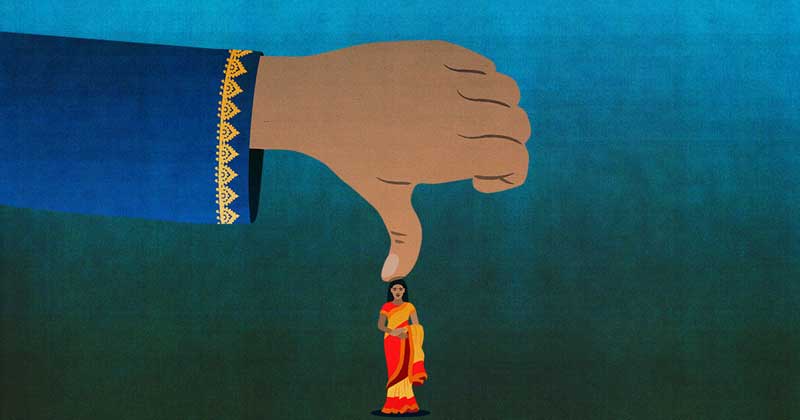Were India to be a harmonious balance between the men and women, it wouldn’t have led to usual outbursts in the media regarding mansplaining. Rape culture, moral-policing and, social epidemics such as dowry notwithstanding- women are either under-represented in the mainstream or under-appreciated.
The state of women in the second-most populated country of the world is a far cry from being ideal out here in India.
Were India to be slightly more tolerant and inclusive of its women, the world’s largest democracy would no longer have had to carry out placard-wielding protests that read, “say no to female genital mutilation” or, “Nari Shakti” or, “women power.”
For there to be a perfect balance in any natural phenomenon- philosophy dictates- there’s got to be harmony between two equals. But in India’s case- there seems to be a clear imbalance between the yin and yang of the male and female gender.
While what was, principally, a problem of underwhelming gender-representation, now appears, to have grown multi-fold, making its presence felt in the workforce of the country.
You read that right and perhaps are as helpless as the vastly under-represented women that form part of India’s workforce. A new study throws open a can of worms, particularly where it comes to highlighting the sheer dearth of numbers India’s women represent in the country’s overall workforce.
A pertinent research published in the revered Economist warrants more attention than any Instagram updates on Priyanka Chopra or any viral post concerning Meghan Markle at this time that you might be engrossed with.
Back in 2005- at a time where Prime Minister Modi was still coming up the ranks and when the likes of Amazon, Netflix or, Uber weren’t the dominating phenomenon they are today- the female employment rate in India (counting both formal and informal sectors of the economy) stood at 35%.
Mind you, at this point of time, icons like Kiran Mazumdar Shaw and Indira Nooyi were still representing corporate elite from topmost echelons of leadership.
One wonders, what might be the figure constituting female employment today, in 2018?
To your utter surprise and the classic economists’ horror, the overall female-employment of our country has nose-dived a few slots down to 26%.
This primarily indicates what could be a predicated ghastly scenario; that hundreds and thousands of keen, intelligent and, qualified women are either not employed, have quit, have been made to quit, haven’t been able to find jobs or are simply not working- for reasons best known to their own selves.
The Economist went on to suggest a rather optimistic transposition as to what might occur if India did get its act together on making more women part of an active workforce.
Should there be a rebalancing in the current workforce, among the world’s biggest economy would be, if not more, at least 27% richer! Can you wrap your minds around this frazzled puzzle?
In the period of 2005 to 2018- not only has the Indian economy more than doubled, but the number of working-age women has grown by a quarter.
The problem in the current context isn’t just a lack of women representation in the work-force. Rather, it concerns how deep does the river run. On present estimate, nearly 10 million fewer women are in jobs in India, that’s clearly more than the population of an Israel, Finland or Djibouti.
The statistical anomaly may irk some to reduce their heads to shreds considering the sheer talent and quality of intelligence India’s women carry, not boast of. There hardly seems to be a year where a girl hasn’t topped a CBSE senior secondary or higher secondary examination- an arduous pilgrimage one has to undertake in order to forge a successful career.
There are more graduates and postgraduates in India, than the whole of SingaporMalaysiasia and Thailand put together. Where do all these future talents go?
While most would immediately latch on to the following statistic as a primer for change, it underlines a concern- about the what if:
A rise in female employment rates to the male level would provide India with an extra 235m workers, more than the EU has of either gender and more than enough to fill all the factories in the rest of Asia.
Can the country for once, get its act together and flex its muscle on a parity of both genders in the workforce? In the present, the stifling puzzle is more troubling than the imbalance between women and men’s pay at the workforce.


